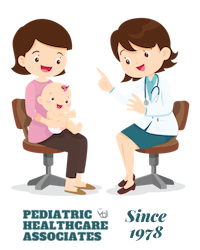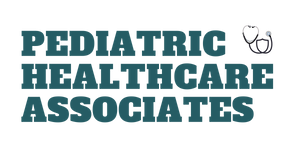Nosebleeds in Children: Causes, Prevention, and When to Seek Help
Nosebleeds, also known as epistaxis, are a common occurrence in children and can often cause concern for parents. Seeing blood suddenly trickle from a child’s nose can be alarming, but in most cases, nosebleeds are harmless and stop on their own with proper care. They typically result from minor irritations or environmental factors rather than serious medical conditions. Understanding the causes of nosebleeds, effective management techniques, and preventive measures can help parents feel more confident in handling them, especially during the dry fall and winter months when they tend to occur more frequently.
Nosebleeds in children often occur due to dry air, allergies, frequent nose blowing, or even minor trauma like nose-picking or accidental bumps. The nasal passages contain many tiny blood vessels that can break easily, leading to bleeding. Children who experience frequent colds, sinus infections, or exposure to irritants such as smoke or strong odors may be more prone to nosebleeds. Additionally, underlying health conditions like clotting disorders or high blood pressure, though rare in children, can contribute to persistent nosebleeds.
At-home care is usually sufficient for most nosebleeds. Parents should have their child sit upright and slightly lean forward while gently pinching the soft part of the nose for about 10 minutes. This helps stop the bleeding by applying pressure to the affected blood vessels. Placing a cool compress on the nose or using a humidifier in dry environments can also help prevent future episodes. However, if the nosebleeds are frequent, prolonged, or accompanied by other symptoms such as dizziness, excessive bruising, or unusual fatigue, it’s essential to seek professional medical advice.
Pediatric clinics in Altoona provide expert care for children who experience recurrent or severe nosebleeds. Experienced pediatricians can assess the underlying causes, recommend appropriate treatments, and offer guidance on how to prevent future episodes. In some cases, doctors may suggest nasal moisturizing treatments, saline sprays, or medical interventions like cauterization to address persistent nosebleeds.
Prevention is key when it comes to reducing the frequency of nosebleeds. Parents can encourage their children to keep their fingernails short to minimize nose-picking injuries and ensure they stay hydrated to prevent dryness in the nasal passages. Using a humidifier, especially during colder months, can help maintain moisture in the air, reducing the likelihood of nosebleeds. If allergies are a contributing factor, pediatric clinics in Altoona can provide allergy testing and treatment options to help manage symptoms effectively.
While most nosebleeds are not a cause for concern, it is important for parents to recognize when professional medical attention is necessary. If a child experiences nosebleeds that last longer than 20 minutes, occur frequently without an apparent cause, or are accompanied by unusual symptoms, seeking care from pediatric clinics in Altoona is recommended. Pediatricians can provide a thorough evaluation to ensure there are no underlying medical conditions contributing to the issue.
By understanding the causes, management techniques, and preventive measures, parents can handle nosebleeds in children with confidence. Knowing when to seek professional care ensures that any potential concerns are addressed promptly, allowing children to stay healthy and active.
Causes of Nosebleeds
Children are particularly susceptible to nosebleeds because of the delicate blood vessels in the nose. These vessels can be easily irritated or damaged by various factors, leading to spontaneous bleeding. Here are the most common causes:
- Spontaneous Nosebleeds Most nosebleeds start without an apparent cause. These are referred to as spontaneous nosebleeds and typically happen when a child’s nasal membranes become dry or irritated. Dry environments, such as those with forced air heating in the winter, are notorious for drying out the nasal passages, making them more prone to bleeding.
- Nose Rubbing or Picking Children often rub or pick their noses out of habit, and this is the most common known cause of nosebleeds. The act of picking at the delicate nasal lining can rupture blood vessels, causing bleeding. It’s important to encourage children not to put their fingers in their noses to avoid this common trigger.
- Blowing the Nose Too Hard Blowing the nose with excessive force can also lead to nosebleeds. During colds or sinus infections, children may blow their noses frequently, which increases the risk of bleeding. The additional pressure exerted during forceful nose blowing can damage the fragile vessels in the nose.
- Suctioning the Nose For infants and toddlers who are unable to blow their noses, parents sometimes use a suction bulb to clear nasal congestion. If the suction device is inserted too far or used too forcefully, it can cause a nosebleed. Always be gentle when suctioning a young child’s nose.
- Sinus Infections Sinus infections can lead to nosebleeds as well. The infection causes the nasal passages to become inflamed and congested with dry mucus. This congestion can result in frequent nose blowing and irritation, making the nose more prone to bleeding. While most sinus infections are viral and self-limiting, they can increase the risk of nosebleeds.
- Dry Air During fall and winter, forced air heating can cause dry indoor environments, leading to the drying out of the nasal passages. Dry air can cause the lining of the nose to crack, increasing the likelihood of nosebleeds. Using a humidifier in your child’s room can help alleviate this problem by adding moisture to the air.
- Nose Allergies Nose allergies, such as allergic rhinitis, are another common cause of nosebleeds. The itchiness caused by nasal allergies often leads children to rub their noses, which can damage the blood vessels inside. Additionally, allergy medications designed to reduce nasal congestion can also dry out the nasal passages, contributing to bleeding.
- Medications Certain medications, like ibuprofen and aspirin, can increase the risk of bleeding. While aspirin is not commonly used in children, ibuprofen is a popular over-the-counter pain reliever and anti-inflammatory medication that can make nosebleeds more difficult to control.
- Bleeding Disorders (Rare but Serious) In rare cases, nosebleeds can be a sign of an underlying bleeding disorder, where the body’s ability to form blood clots is impaired. If your child’s nosebleeds are difficult to stop or they bleed excessively from minor cuts, it’s important to seek medical advice to rule out any clotting issues.
When to Seek Help from a Pediatrician
While most nosebleeds can be managed at home, there are situations where professional help is necessary. Call a pediatrician in Altoona if:
- The nosebleed lasts longer than 20 minutes despite applying pressure.
- Your child loses a large amount of blood.
- Nosebleeds are frequent (three or more times a week).
- Your child has other symptoms, such as bruising or bleeding from the gums.
- There is a family history of bleeding disorders.
- Nosebleeds occur after an injury, especially if accompanied by dizziness or fainting.
These signs could indicate a more serious issue, and it’s crucial to get a proper diagnosis and treatment.
How to Prevent Nosebleeds
Although nosebleeds are often unavoidable, you can reduce their frequency by following these tips:
- Use a humidifier: Keep a humidifier in your child’s room, especially during the dry winter months, to maintain moisture in the air.
- Keep the nose moisturized: Apply a thin layer of petroleum jelly or saline nasal spray to the inside of your child’s nostrils to keep the lining from drying out.
- Encourage gentle nose blowing: Teach your child to blow their nose gently to avoid damaging the delicate blood vessels.
- Limit nose picking: Encourage your child to avoid rubbing or picking their nose. Trimming their nails short can also minimize the risk of injury.
Conclusion
Nosebleeds in children can be unsettling, but they are usually not a cause for concern. Understanding the common causes and knowing when to seek medical attention can help parents manage and prevent nosebleeds effectively. If nosebleeds become a frequent problem or are difficult to stop, it’s always best to consult a pediatrician for guidance.
At PHCA Altoona, our experienced pediatricians are here to help with any concerns you may have regarding your child’s health. Use our Symptom Checker to assess your child’s symptoms and determine whether a visit to the doctor is necessary.





